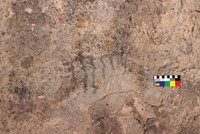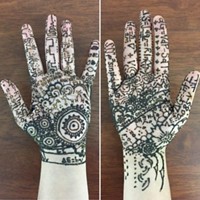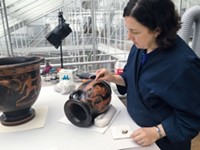Advertisement
Grab your lab coat. Let's get started
Welcome!
Welcome!
Create an account below to get 6 C&EN articles per month, receive newsletters and more - all free.
It seems this is your first time logging in online. Please enter the following information to continue.
As an ACS member you automatically get access to this site. All we need is few more details to create your reading experience.
Not you? Sign in with a different account.
Not you? Sign in with a different account.
ERROR 1
ERROR 1
ERROR 2
ERROR 2
ERROR 2
ERROR 2
ERROR 2
Password and Confirm password must match.
If you have an ACS member number, please enter it here so we can link this account to your membership. (optional)
ERROR 2
ACS values your privacy. By submitting your information, you are gaining access to C&EN and subscribing to our weekly newsletter. We use the information you provide to make your reading experience better, and we will never sell your data to third party members.
Environment
A Museum Career
Chemist works at intersection of chemistry and art
by William G. Schulz
October 19, 2009
| A version of this story appeared in
Volume 87, Issue 42

There's no straightforward path to a career in conservation—or cultural heritage—science. Just ask Catherine M. Schmidt. Her path included a major in chemistry and a minor in art history in college, followed by a Ph.D. in chemistry. This path eventually led her to her current position as a researcher at the Getty Conservation Institute (GCI), in Los Angeles.
The course Schmidt followed illustrates the fact that there are no graduate degree programs in the field of cultural heritage science in the U.S. As a result, scientists working in U.S. museums have typically pursued Ph.D. degrees in chemistry or a related field such as materials science. But things are changing, and some of these programs are beginning to offer an emphasis on cultural heritage.
Schmidt says she has been interested in museum work since her days as an undergraduate at Truman State University, in Missouri. During her undergraduate education, Schmidt's professors let her pursue her interests by, for example, writing an art history paper on a scientific analysis of Queen Nefertari's tomb in Egypt and writing a chemistry paper on analytical techniques used to examine mosaic tiles in Italy.
Upon completing her bachelors degree in 2002, Schmidt says she contemplated a master's degree in art conservation, but "I was enough in love with chemistry that I didn't want to give that up." She enrolled at Northwestern University and made it known to her professors that she wanted to work on projects with application to museum environments and art objects. Her research there included studies of the interactions of indoor air pollutants on catalytic surfaces such as TiO2, a component of many paints.
While she was at Northwestern, the school formed a partnership with the Art Institute of Chicago, and she was able to participate in many of the resultant symposia and other programs. By the time she finished her chemistry Ph.D., Schmidt says, there were several postdoctoral science-conservation programs to choose from. She ended up applying for and was awarded a fellowship at GCI.
After her postdoc ended this year, Schmidt was hired full time by GCI. Since then, she has been able to work on a variety of projects. She has studied lapis lazuli pigments using a variety of analytical techniques (Anal. Chem., DOI: 10.1021/ac901436g), for example, and she has a current project using X-ray fluorescence and Raman spectroscopies to study the panel paintings and illuminated manuscripts of the 14th-century Italian artist Pacino di Bonaguida. Results of the study will be part of an exhibition of Pacinos works at the J. Paul Getty Museum, in Los Angeles, scheduled for 2012.





Join the conversation
Contact the reporter
Submit a Letter to the Editor for publication
Engage with us on Twitter